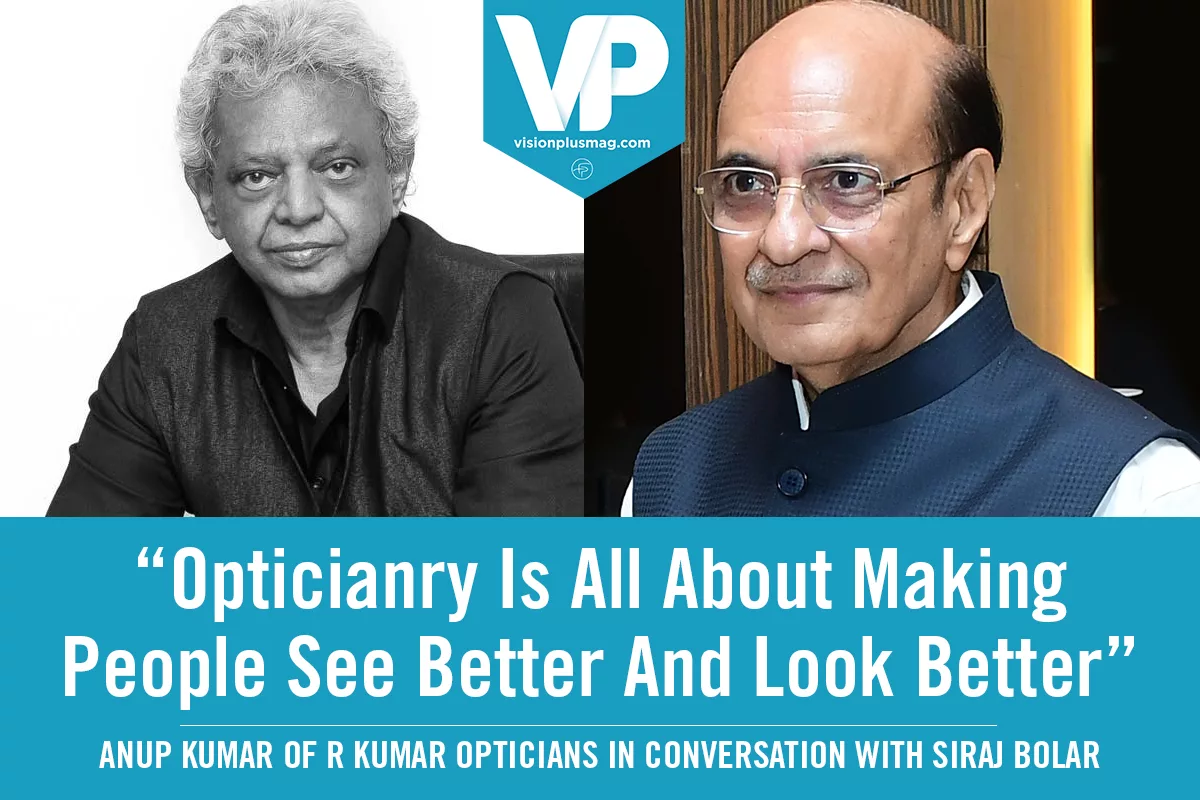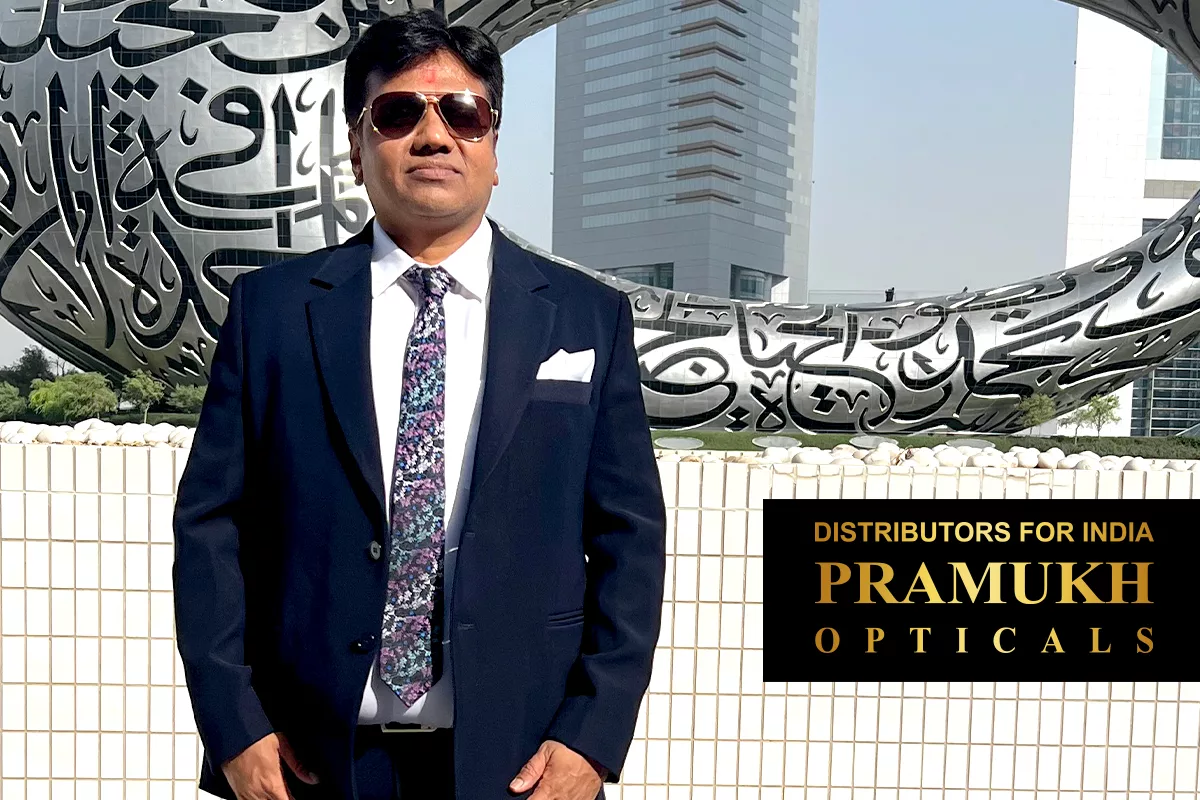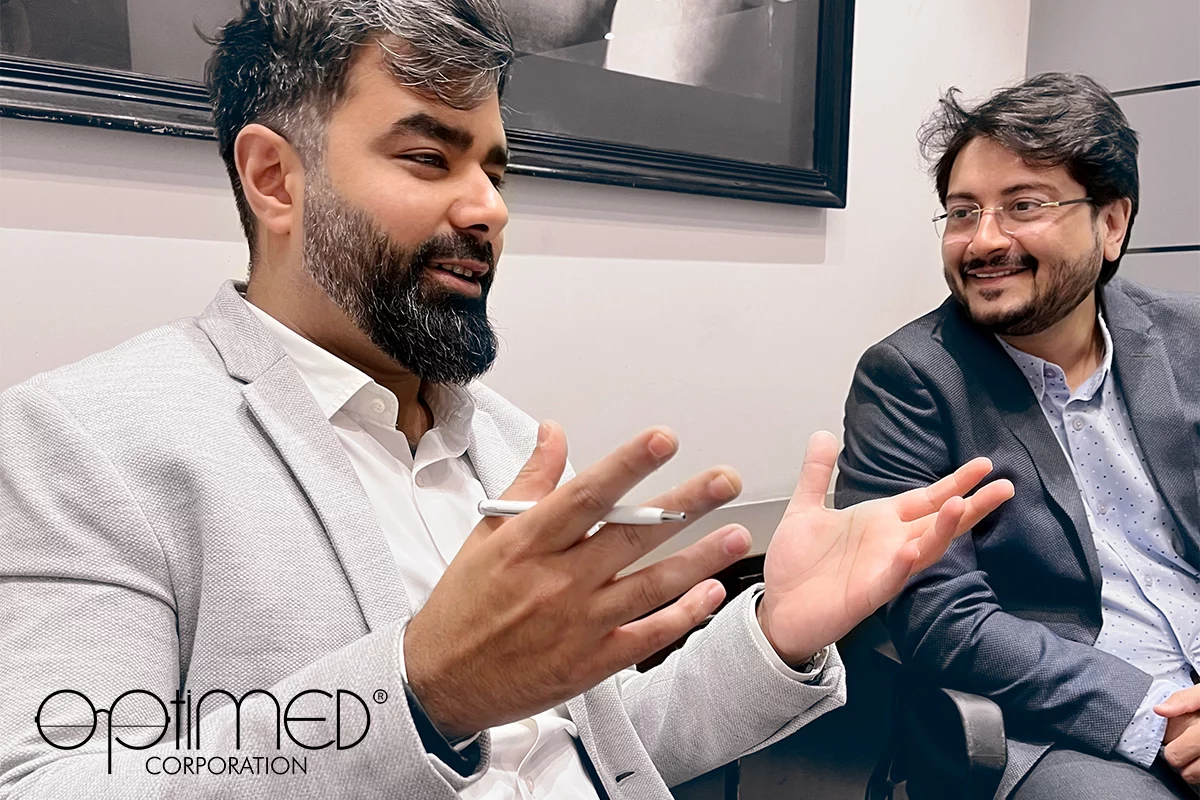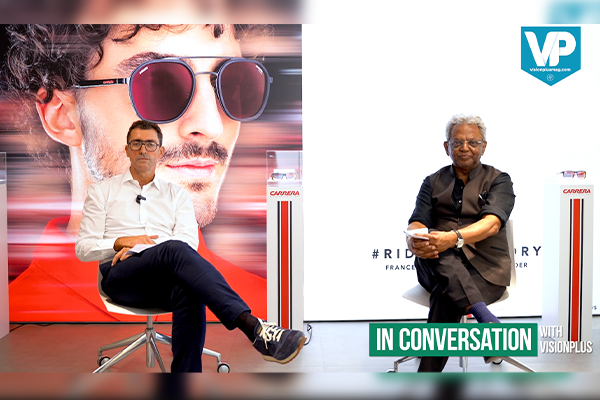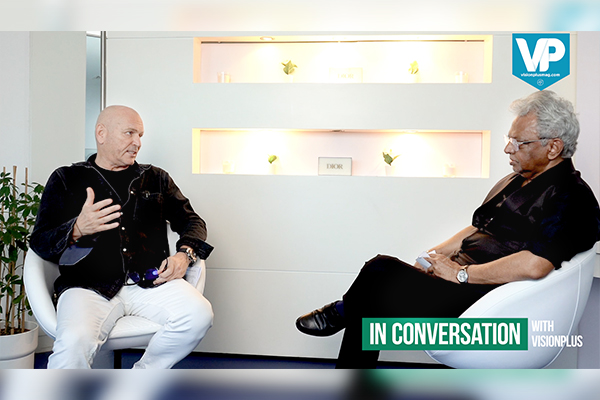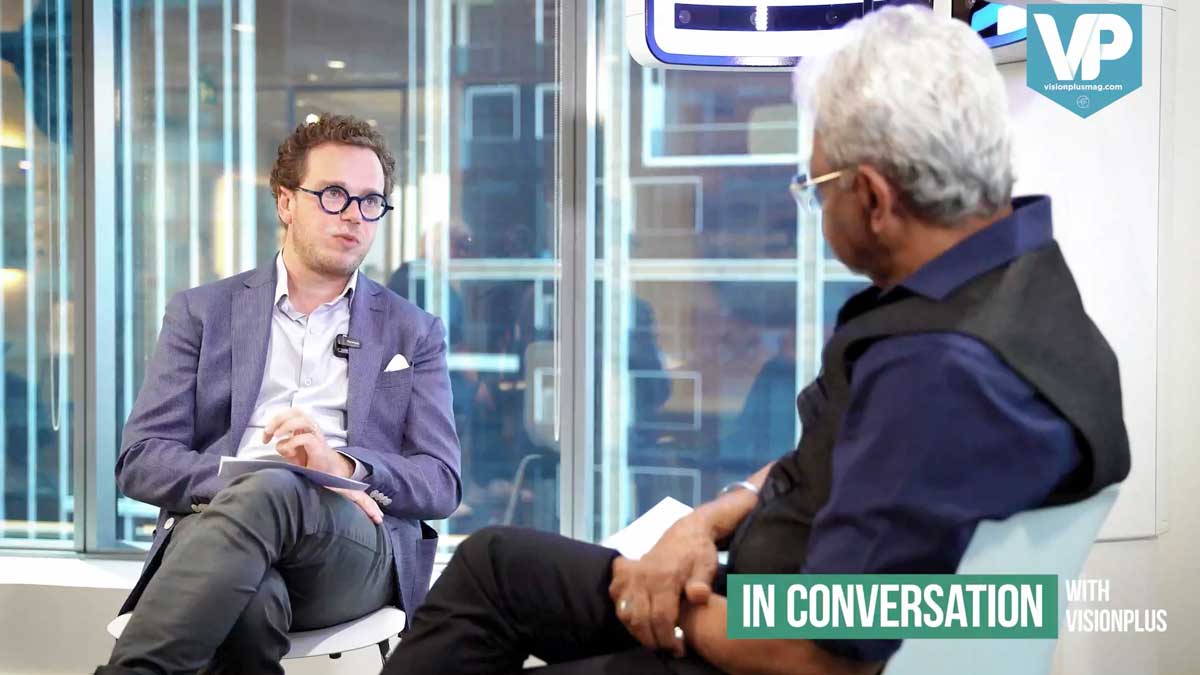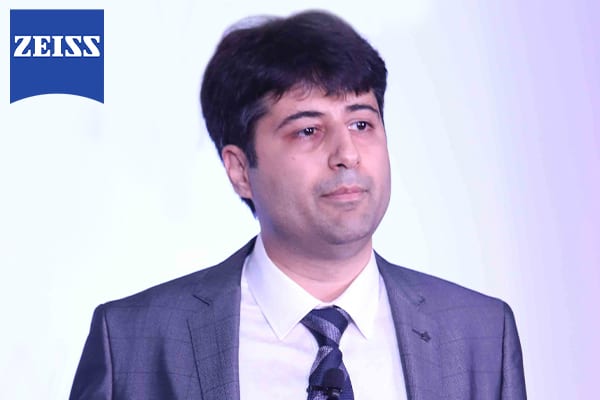Anup Kumar is probably one of the most respected and admired opticians in India today. Under his aegis, R Kumar Opticians has won many awards and accolades, including the ZEISS ‘YOU&EYE’ AWARDS. There’s no better person in the industry today to mentor and advise opticians in India who are currently wondering how to move ahead in their domain.
Here he is, in conversation with Siraj Bolar.
Siraj Bolar : Please tell us a little bit about your history and how it all started.
Anup Kumar : The firm R. Kumar may have started in 1960 by my father, the Late Mr. Ravindramohan Kumar (R. M. Kumar) but today, if I reflect back, the family always had its foundations in affluent luxury retail. Our forefathers from pre-partition Punjab were jewellers and lifestyle retailers, catering to royal families.
My father, an optometrist of the old school with excellent linguistic skills , established himself as a premier optical and vision care provider ,amongst the elite of Ahmedabad. He was a visionary who saw merit in investing in and upgrading the dispensing and refractive equipment to improve upon the standards of dispensing. In more ways than one, he propelled R. Kumar into a business that strives for excellence, innovation and relevance in evolving times. Hence, today, at R. Kumar, we see even the fourth generation of customers.
SB : The first and most important question that all opticians want to know from you is how did you manage to create such a loyal customer base?
AK : Customer loyalty is a vast subject and in different times, there are different factors that may influence customers’ loyalty. Our founder always laid emphasis on seeking excellence in our work and constantly evolving to stay relevant with times. I believe these principles have helped us stay on course.
SB : When, in your opinion, is the right time to move from a single store to multiple stores? Please elaborate.
AK : I am assuming, you mean that if I have one shop and then ,when should I consider opening my second, and subsequently more shops.
My first and foremost priority, make your existing shop profitable.
Second, see if your customers are moving to other parts of the city and your city is expanding enough to support a second or furthermore shops profitably. Alternately, if you see an audience for yourselves in other parts of the city or in other cities. Your audience is your niche; it’s the one that you understand and the one that understands from you. Having a lot of customers around does not mean they will become your customers. If you and your business does not resonate with the customer base of an area or city, then it’s not the place for you to be in.
Create systems that will run multiple shops in your absence. It is one thing to be super busy and successful in a single shop. That is a personality driven business model. Running two or more locations is a completely different model. So, if you are successful running a single shop, but are unable to create a system that runs the business in your absence, then stick to that one shop and look at growth by cross-selling and up-selling in the same location. However, if you are able to create a team and systems that can successfully take over the day-to-day sales and operations, then spread your wings.
SB : What is your idea of a good mix of collections from an inventory and display standpoint when your target audience includes infants, kids, teens, young adults, adults, middle-aged, senior citizens, etc?
AK : One of the unique traits of our industry is that we cater to very diverse audiences. Age is a huge parameter of the diversity that we serve. The underlying factor is trust. The optician, one trusts for her or his own vision requirements is the one she / he would trust for the same needs of her / his entire family. Hence, we have customers from infants to senior citizens. However, the needs and aspirations of the customers at different points in their lives are different. So, we have to ensure that we have the right mix of products for each age-group.
For infants, we need to have technically correct eyewear that is flexible and less prone to breakage. For kids and teens we need to have eyewear that goes beyond the functionality and is something they can feel confident and comfortable to be in. From young adults through the middle ages, one seeks eyewear that is an expression of one’s personality. It can be as diverse as being just functional to being aspirational. Designer eyewear and brand Names can be a huge influence here. While for senior citizens, the onus is more on being light in weight and comfortable. Prestigious luxury brands, is also something that can be an aspiration for senior citizens.
However, the only way to find out the right mix for each of your counters, is to make mistakes and take notes so you don’t make those mistakes again. As antithetical as this may sound, but true wisdom is earned at the price of experience. Apart from what works for your set of customers, what matters is what you are confident presenting. If I don’t believe in a certain aesthetic then I will not be able to convince my customer about it. Hence, the inventory mix at your shop has to be something that you believe in and your set of customers aspire to have.
SB : When it comes to store design, what’s more important – Design or Functionality? And how do you maintain the balance?
AK : I am a little old school and kind of detest the word “store” for my “showroom”. To design a store is simple. It’s supposed to be an efficient space to stock up. But a showroom is where you display to show-off your products in the best possible manner, to attract, convince and sell to a customer. Hence, I would dedicate a fair share of the customer-facing area of the showroom to the aesthetic. And I would invest time and resources to design the storage, servicing and back office areas ,to optimise the functionality.
SB : When it comes to reaching out to your customers, what’s the ratio of advertising spend between traditional (hoardings, print etc) and digital (social media, whatsapp etc)?
AK : Over the past few years, we have rationalised advertising spends across traditional and digital media. We don’t believe in pestering SMS or WhatsApp messaging, We feel that over time it will build a negative image for the company. Social media has its advantages. At the same time it has too many options to play with which may often not be as effective. It is easy to lose one’s way and waste money in this medium. We are still trying to understand and see how we can leverage it to our advantage. Traditional media, print and OOH, have become too expensive for businesses of our size to invest in consistently.
SB : How do you ensure your employee’s loyalty?
AK : I feel, we cannot expect the kind of employee loyalty, as in yesteryears where most employees continued to work for you for a lifetime. In today’s world, retention of an employee has to be on the basis of alignment of goals of the employer and the employee. Beyond a point, money ceases to be a motivator. Employees today seek purpose in what they do and fairness in the workplace. The onus of providing a growth that is inclusive of diverse aspirations is on the employers today.
SB : Any message or advice to the members of the optical industry?
AK: Know your customers. Identify your strengths. Find your niche. Stick to the model that allows you to stay profitable. Eyeing what others seem to do well with may not really be your thing. So, invest your time and energy into what makes you successful. This is a beautiful industry. There aren’t many other businesses that bring you the kind of respect, abundance and affluence as opticianry does.

